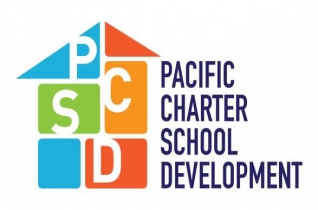As we’ve already suggested, there is no one-size-fits-all development approach for schools. The key is to understand the various developers and development models well enough to evaluate which is the best fit for your project. While there’s plenty of overlap between and nuance within models, four common approaches are:
- do it yourself (where the school takes on all elements of real estate development and financing, typically with help from a third-party project manager),
- fee developer (where the school hires a developer to manage the real estate development process but maintains ownership of the property and borrows money on its own balance sheet to finance the project),
- lease with purchase option (where the developer builds and owns the property and leases it to the school with the intention of the school purchasing the building in the future), and
- long-term lease (where the developer builds and owns the property and leases it to the school under a long-term lease).
Some developers prefer to own the real estate for the long term and lease it to you. And you may prefer not to own your own real estate, making you a good fit for this developer type and vice versa. If you prefer to own your real estate over the long term, but aren’t able to afford it right now or don’t have enough of a financing track record for a lender to invest in you directly, a developer can develop a property for you, lease it to you while your school ramps up to full enrollment, and then sell it to you at some pre-determined price. The price and parameters of the purchase option are critically important for you to understand up front. How is the price calculated, and does it change over time? Will your projected financial position be such that you’ll be able to raise financing for the purchase price? Is it affordable for you at that price, and is your board prepared to take on that debt? If your school is likely to have a wider range of financing options or access to more favorable terms in five years relative to today, a lease with a purchase option may be more cost-effective than hiring a fee developer and borrowing money today. The Development Models table lays out some comparisons among these common approaches, and we go into more detail below.
Do It Yourself
Schools that tackle a development project on their own typically hire an outside project manager, also called an owner’s representative or owner’s rep. A good project manager relieves you of the burden of managing the real estate aspects of the project. A project manager will do the following as part of its key responsibilities:
- perform early-stage budgeting and feasibility analysis,
- manage the process of selecting and assembling a development team (architect, general contractor, etc.) and manage and coordinate among members of the development team,
- schedule requisition meetings and manage the construction disbursement process with lenders, and
- troubleshoot with you on cost overruns, delays, and other issues that come up during construction.
Project managers typically charge a fee based on a percentage of total project costs. This fee should be paid out based on project completion with a significant portion back-ended so that the project manager is on the hook through successful completion of the project (i.e. attainment of a certificate of occupancy).
Fee Developer
A good fee-based developer takes on all aspects of the development of a project, but has no ownership stake or interest in the real estate. You would own (or lease) the site directly and also be the borrower in financing for the project and contribute equity to the project. The developer in this case fully develops your project, but ultimately you are responsible for the project from a risk perspective: you are the obligor on the debt and you are entering into the contracts with the general contractor and architect. There is a lot of overlap between the role of a project manager and the role of a fee developer, but generally a fee developer plays a more comprehensive role, which may include packaging financing for the project, using its own capital to cover predevelopment expenses prior to close of financing, investing its own capital as subordinate debt, and other services. Fee developers typically charge a fee based on a percentage of total project costs (see Developer Survey Findings). As with a project manager, fee payments should be structured such that the fee developer is on the hook through successful completion of the project.
Developer/Landlord: Lease with Purchase Option
The lease-with-an-option-to-buy relationship between a school and developer typically unfolds as follows:
- You contract with the developer and pay an upfront deposit or fee.
- The developer builds the building for you as per your requirements and affordability parameters.
- The developer leases the building to you for a given lease term (typically one to seven years, sometimes longer but with incentives for the school to purchase within one to seven years).
- You raise financing to purchase the building from the developer and take over ownership of the property.
The lease-with-purchase-option and long-term-lease models overlap considerably, but typically differ in that the former includes a mutual intent for the school to purchase the building within a defined period of time and the purchase-option price and/or rent payments escalate, sometimes significantly, beyond the intended time window for the purchase option.
In addition to managing the real estate development process, turnkey developers both invest their own capital in your project as equity or subordinate debt, and borrow money on their balance sheet (directly or through a special purpose entity) for your project. Turnkey developers typically charge a 3-5% development fee, which is paid during construction or through lease payments. In addition to the development fee, your developer will structure lease payments and the purchase-option price to recoup its investment (see Developer/Landlord Model Considerations for more information). The developer will earn its return in whichever way makes the most sense for the project. If the project/school can afford to pay it during the lease period (as may be the case for fully-enrolled schools), that’s where they’ll charge it. If the school is growing its enrollment and its cash flow is tight in the early years, the developer will charge it through the purchase price, inflating it by some percentage over the total project costs to recoup its investment, repay any debt it took out, and capture its return.
It is critical for schools to assess their projected financial condition and repayment capacity at the intended purchase option date/window, and to test feasibility of raising financing in a range of scenarios. The worst-case scenario is you find yourself with an expiring or escalating purchase option, are unable to raise affordable financing to purchase the building, and face unsustainable rent escalations if you stay in the lease. On the flip side, you may decide it’s advantageous for you to acquire the building prior to the purchase option date/window and face a prepayment penalty that the developer owes to its funding source and passes through to you. Stress-test your projected balance sheet ratios, debt-service capacity at a range of interest rates and per-pupil funding rates, as well as the projected loan-to-value ratio at the anticipated refinance period to make sure you’ll be in a good position to raise financing to purchase the property within the purchase-option period.
Developer/Landlord: Long-term Lease
In this arrangement, you pick a developer/landlord to develop the building for you and enter into a long-term lease (typically at least 20 years) with options to extend. This approach tends to come with the fewest headaches, and is a good fit for schools that cannot by law or do not want to own real estate. But it can be among the more expensive models depending on how rent is calculated and how it escalates (even a below-market 1% annual rent escalator adds up over time and may surpass increases in per-pupil revenue). Long-term landlords charge their development fee and their required return through lease payments throughout the term of the lease.
Written by: Sara Sorbello, LISC
Special thank you to: Jennifer Afdahl-Rice, PCSD and Alex Shawe, Level Field Partners
Legal Disclaimer:
Nothing in this material should be construed as investment, financial, brokerage, or legal advice. Moreover, the facts and circumstances relating to your particular project may result in material changes in the processes, outcomes, and expenses described herein. Consult with your own professional advisors, including your financial advisors, accountants, and attorneys, before attempting to consummate any transaction described in this material.


